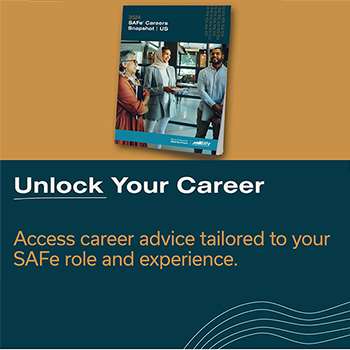
I’ve always been a good test-taker. I also spent almost two years teaching students how to raise their scores on standardized tests like the ACT, SAT, PSAT, and HSPT.
I relied on this previous experience when I studied for and took my SAFe® exam, and it worked. I passed.
I’m sharing the following study and test-taking guidelines to help you pass your SAFe exam:
- Understand the SAFe exam format
- Study for the SAFe exam by interacting with the content in multiple ways
- Take the SAFe exam in prime condition
Learn more about each tip in the following sections.
Tip One | Understand the SAFe® Exam Format
Before you can begin studying, you should understand the test format and structure. Important things to know about your exam include
- Exam style
- Number of questions
- How much time you have to complete the whole exam
- Average time per question
- Passing score
- Exam rules
SAFe® exam question types

All of our SAFe 6.0 exams are multiple choice (one answer). However, the number of questions and time you have to complete your exam vary.
Here are some tips for tackling these types of questions:
- Look for clues to understand the key knowledge being tested: Action words are a great way to determine what is being asked inside the question and what level of knowledge is being tested. This can help you dive deep to find the answer.
- If the answer is only partly true, it’s probably incorrect: Don’t convince yourself an answer is true if it isn’t. We don’t put trick questions in our exams, so it’s probably incorrect unless the answer is obviously true.
- Make predictions: After reading the question, guess the answer before reading the choices. If one of them is the same as the answer you came up with, it’s probably the correct one.
- If you get stuck on a question: Skip it and come back. Other questions and answers may jog your memory. Our exam platform, QuestionMark, makes skipping questions easy because you can flag questions to return to later during the exam. Review the instructions at the beginning of the exam to understand how to flag.
To see your specific SAFe exam details, visit the certification exams page in SAFe Studio™.
Tip Two | Interact with the SAFe Exam Content in Multiple Ways
The first way to learn exam content is by participating in your SAFe course. Once you’ve learned the content, here are a few ways to remember it.
Step One: Study SAFe® materials
The My Learning section in SAFe Studio is the best place to start when studying for your exam. When you log in, you’ll see materials for each course you’ve taken. These materials include
- The course digital workbook
- The SAFe exam study guide
- The practice test
Review the course slides and your notes after the class. Then download the SAFe exam study guide provided and read through it.
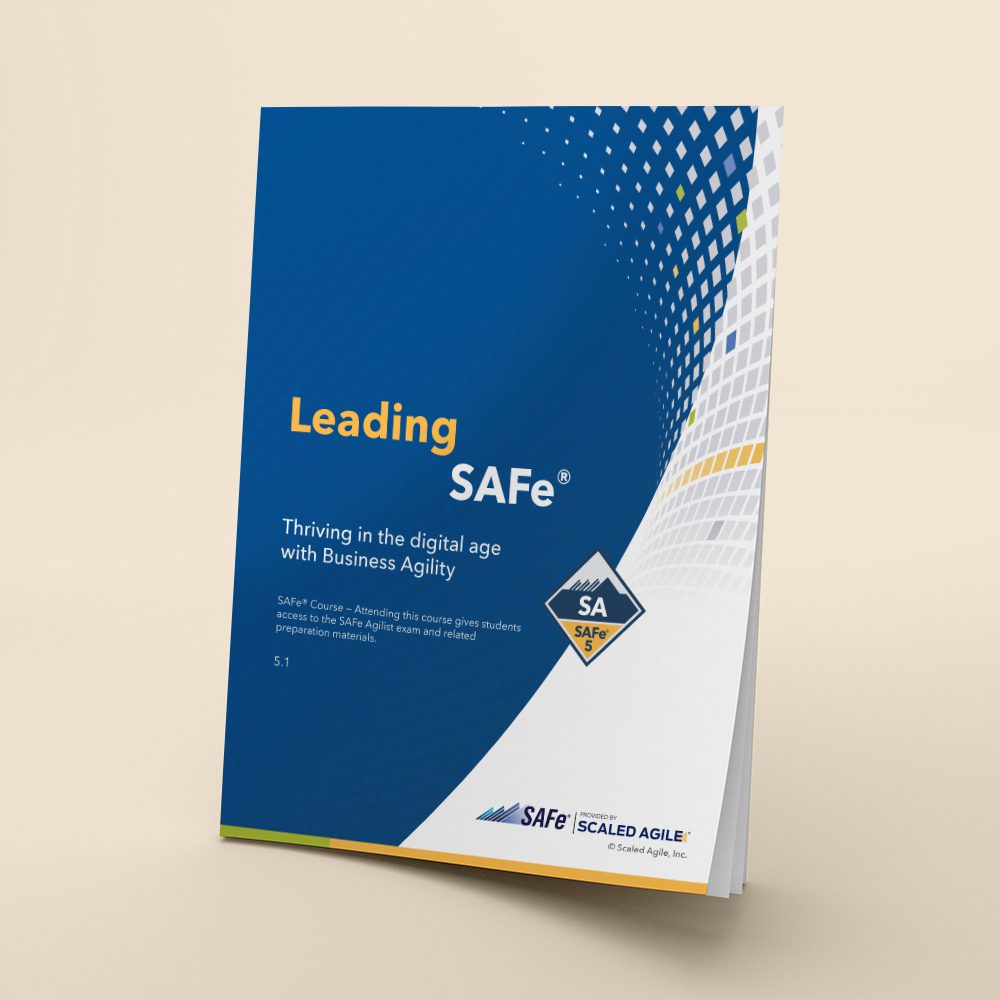
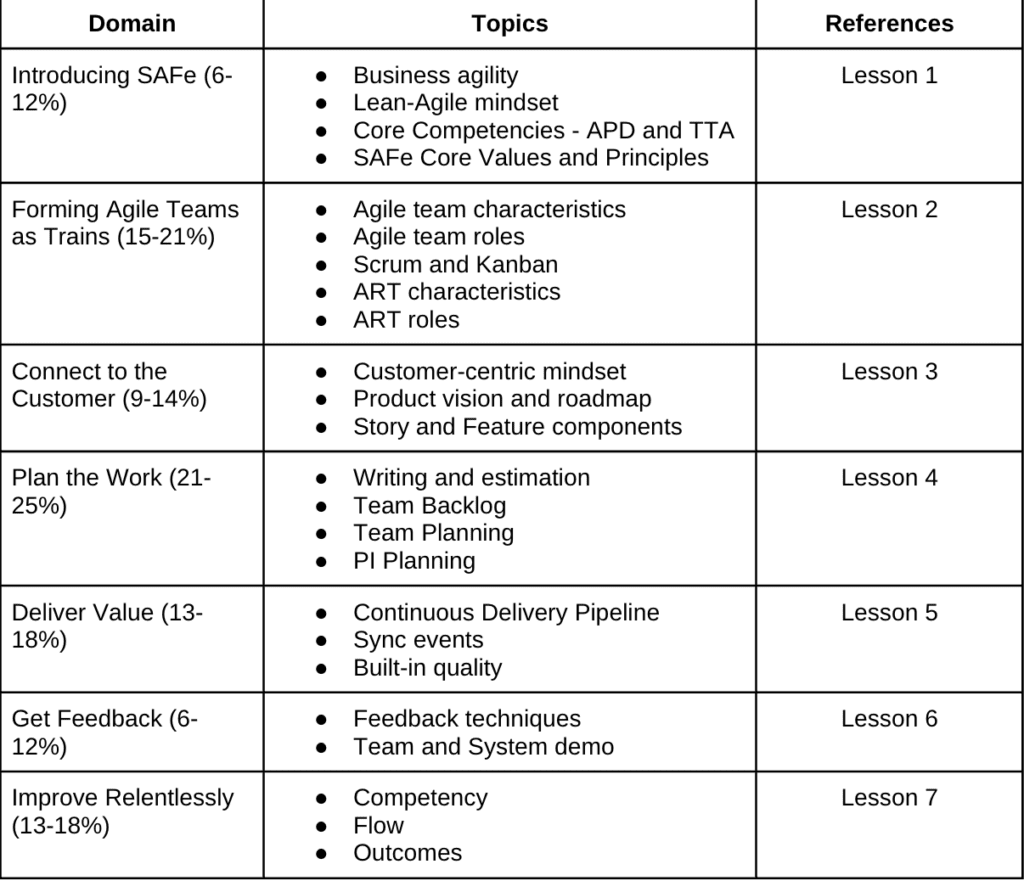
The exam study guide is a great tool for determining what percentage of the exam will be made up of a specific domain and the topics within it. These topics will also show in the feedback reports for both the practice test and exam.
You can also learn from others’ experiences in the SAFe Community Forums. When in doubt about which forum to start with, use the general SAFe discussion group. Someone will guide you to the appropriate forum from there.
Additionally, there are plenty of SAFe videos that break large Framework concepts into smaller, visual pieces that can be easier to study if you’re a visual learner.
When all else fails, ask a peer who has already passed their exam which materials they found most helpful when studying.
Step Two: Target your weaknesses by taking a practice test
To make the best use of your time, you need to target not only your perceived weaknesses but your objective weaknesses. One of the best ways to do this is by taking the practice test in the same conditions in which you’ll take the certification exam.
In SAFe practice tests, you can see which questions you got wrong but not the correct answers. You can also see a category breakdown and the percentage you got right in each. This breakdown gives you specific topics to focus on when studying.
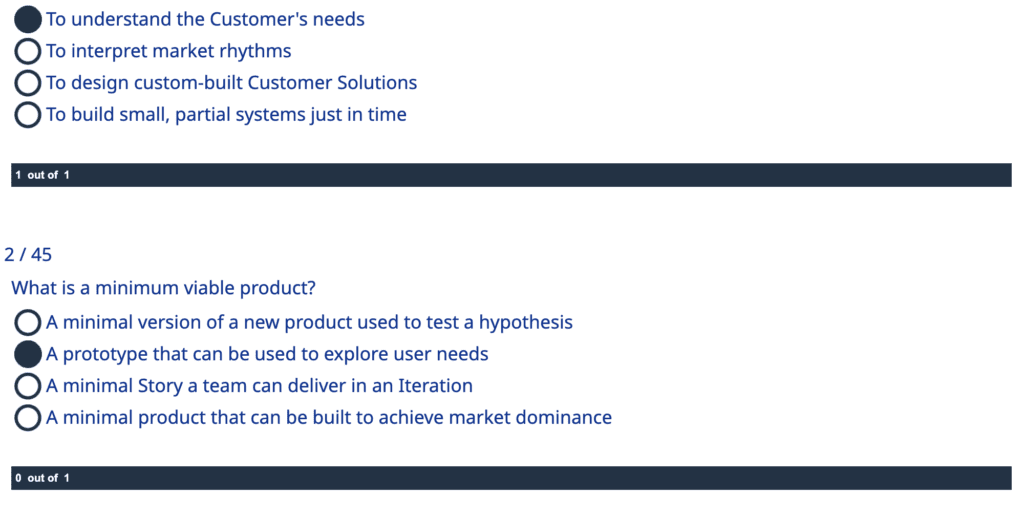
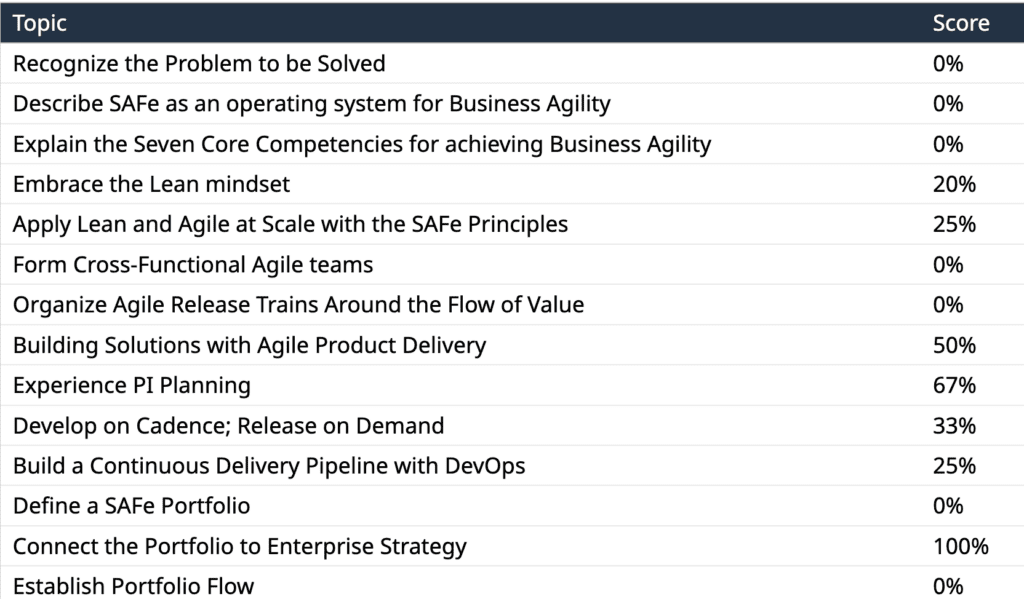
I recommend using the practice test to guide your studying. Take it after you’ve finished the class before you’ve begun studying earnestly. Then prioritize studying the categories in which you received the lowest scores.
A word of caution: do not try to memorize the practice test. The questions on the actual exam aren’t the same.
Focus instead on the concepts. Ensure you’ve clarified all the terms and content you felt shaky on in the practice test.
Step Three: Engage creatively with the content
Now you need to try to learn the material you’re weakest in; reading the articles over and over isn’t going to cut it. These were my favorite ways to engage creatively with the content and study.
Teach the material to someone unfamiliar with it
Explain the Big Picture to someone. If you’re familiar with all of the icons on the Big Picture and can explain them well, you’re in good shape.
Bonus points if it’s someone not familiar with the Big Picture or SAFe. They’ll have many questions to test your knowledge further.
Build a case study
Use a real company, your company, or a fictitious company and try to apply some of the abstract concepts with which you’re struggling.
While studying for the SPC exam, I created a fake company called Lib’s Lemonade. I outlined its strategic themes and objectives and key results (OKRs). I then made a Lean business case for a proposed product. Finally, I attempted to map the company’s value streams.
Bonus points if you share it with someone else who is knowledgeable in SAFe and who can check for correctness.
Review your work through a SAFe lens
What matches the Framework? What doesn’t? Does your team write stories using user-story voice? Do you use the IP iteration for innovation and planning? Does your team have WIP limits on its Kanban board? Do you have a scrum master? What would it be like if your company did things differently?
Have a conversation with a coworker about these discrepancies. If you have some influence, make some of these changes. Or shadow and learn from someone in your company who works in the same role for which you took the course.
Have someone quiz you on high-level topics
Make flashcards with questions on the front and the answers on the back. Then ask a friend to quiz you with the cards with the question side facing you and the answer side facing them. This method lets you simultaneously see the question while they check the answer on the back.
Find a study partner
If you know someone who took the class with you and is also studying for the exam, meet up to study with them. Ask each other questions, hold each other accountable, and wish each other luck when you take the exam.
Preparing for an exam with a partner makes it more approachable and can make the experience more fun and comfortable.
Take the SAFe Exam

The only thing left is to take the exam. If you’re like me, it’s probably been a while since you last took an exam.
Here are some of my favorite test-taking tips to help dust off the cobwebs.
Don’t wait until the last minute
Take the SAFe exam as soon after class completion as possible. For the best chance of success, we recommend waiting no more than 30 days. Also, take the exam when you have the appropriate time, space, internet connection, and quiet to focus.
Track the time
The countdown clock at the top of the screen will help you keep track of the time. Use this to pace yourself throughout the exam.
Read each question carefully
You can also read them aloud to ensure you slow yourself down and reduce your chances of misreading the question. Once you’ve read the question, don’t forget to read all the answer choices, even if you think you know the answer before you’ve read them all. There may be a more correct answer waiting for you to select it.
Review your answers before submitting
Make sure each answer you chose actually answers the question. Also, only change your answer when you know with certainty that your previous answer was a mistake. Changing your answer based on a whim is a bad idea.
Use process of elimination
Sometimes, when you read the question, you won’t be sure what the correct answer is. But chances are you’ll know that some answers are incorrect. Eliminate them, and don’t look at them again. This technique will free up your working memory to focus on the final two or three options remaining.
Prime your mind
The power of association is strong. And according to this article, the sense of smell most strongly recalls memory.
So, if you chew mint gum while studying for your SAFe exam at the desk in your home office at night, research shows that you’ll prime yourself to do well on the exam if you chew mint gum while taking your SAFe exam at the desk in your home office at night.
Some people use a scented perfume, lotion, or lip balm to elicit the same effect. And as long as you were in a good headspace while studying, you’ll likely be in a good headspace while taking the exam.
Calm your nerves
Many people have test anxiety. Knowing what to expect for the exam can help decrease this anxiety significantly.
Confidence from studying the content can also ease your nerves. Going into the exam well-prepared always helps.
If worse comes to worst, and you don’t pass the exam on the first try, knowing that you can take the exam again and pass can also be a comforting feeling.
Conclusion
Here are some additional resources to help you with studying for and passing the exam:
- Exam FAQs
- QuestionMark FAQs
- How Exams Are Built video
- Misconceptions of Certification videos: part one and part two
Please note that we highly discourage visiting websites that claim to have real SAFe exams or answers. Test material changes often, and it’s a violation of our ethics and certification standards to use these resources.
There you have it: the keys to passing a SAFe exam to get certified. And after you pass your exam, don’t forget to claim your well-earned certification badge. Here’s how.
Now it’s time to begin your exam. Good luck from the Scaled Agile, Inc. team! You’ve got this.
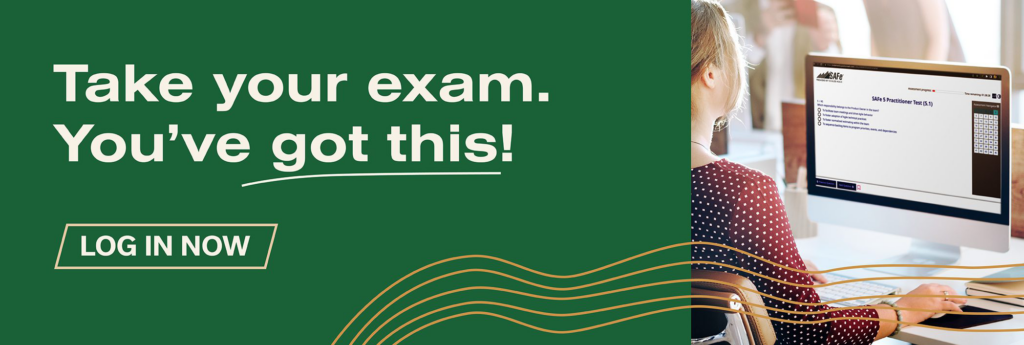
About Emma Ropski

Emma is a Certified SPC and scrum master at Scaled Agile, Inc. As a lifelong learner and teacher, she loves to illustrate, clarify, and simplify to keep all teammates and SAFe learners engaged. Connect with Emma on LinkedIn.
